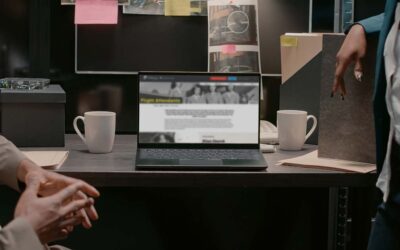8 Tips to a Bulletproof Grant Proposal

Rachael Cristine Woody
Grant writing can be a complicated and intensive process. Each grant application will have a different emphasis and process to follow, and if you’re new to grant writing, it can be intimidating. While all grants are different, there are aspects that remain the same. From the dozens of grants I’ve written, read, and edited, I’ve compiled the top 8 tips to a bulletproof proposal.
- Match the Mission
Applying for grants can be so appealing—and if your museum is just starting to look at grants the number of funding opportunities can be overwhelming. For a museum proposal to be successful it’s critically important the museum state a specific mission or goal. Once that’s identified, evaluate each granting agency’s mission to ensure the missions align. If the museum submits a proposal that doesn’t match the granting agency’s mission the museum’s proposal will be disqualified. - Demonstrate a Proof of Concept
Granting agencies look for information that will indicate if a proposed project will be successful. In the proposal, be sure to provide a proof of concept, point to a related project, and/or demonstrate ways in which the museum will help to ensure a successful outcome. - Clearly Define the Project Timeline & Cost
Whether a straightforward project, or one with many phases, make sure to breakdown each area with a clear explanation of what the work entails. The more clearly articulated the workflow, staff needs, time, and costs, the better the proposal will look. Grant reviewers are not always museum specialists, so the clearer the timeline and costs are, the more likely the proposal will succeed. - Collaborate & Give More Bang for the Buck
Resources are always an issue and granting agencies find themselves increasingly needed to support museums. To stand out, a museum must either work with peers or commit to sharing the project outcome. A proposal is irresistible if it offers the opportunity to support multiple museums. - Letters of Support
When in doubt: provide 2-3 letters of support. If collaborating, letters of support from collaborators will be required. If you’re not collaborating, letters of support from stakeholders demonstrate that benefits of the project will be appreciated and wide-spread. For a competitive edge, I recommend requesting letters of support from your competitors and peer institutions. If they can agree on the value of the project, the suitability of the proposal will be undeniable. Pro Tip: provide a draft letter to the people from whom you request a letter of support. If they can easily edit and sign an already written letter they’re more likely to say yes to supporting your project. - Money Attracts Money
Grants require support from museums in the form of matching or in-kind money. The more money or non-monetary assets the museum can provide as evidence of investment, the better value the proposal will have. Be sure to include the cost for space, supplies, and technology used, in addition to staff and volunteer time donated towards the project. The more museum and community investment are demonstrated, the more attractive the proposal will be. Remember: money attracts money. - Limit the Jargon
Museum proposals are often created by highly specialized professionals. While it’s important to use the correct professional terms, it’s equally important to limit professional jargon whenever possible. Grant reviewers aren’t always specialists, so a clear proposal will have a better chance of being fully comprehended and appreciated. - Be Sustainable
Ensure the proposal addresses sustainability, especially if the proposed project continues past the grant-funding phase. Clearly state if it’s a self-contained project. If the intent is to evolve past the grant-funded phase then speak directly to how the museum will ensure continuation. Granting agencies won’t fund proposed projects that may die prematurely. They want to see projects live on and evolve. If the proposal isn’t clear on how it will be sustainable past the grant-funded phase, granting agencies will be reluctant to provide funding.
Again, all grants are different, but there are aspects that remain the same. My experience has shown me that these 8 tips are relevant for the majority of grant proposals.

Rachael Cristine Woody
Stan writes regularly for Lucidea’s Think Clearly blog. Subscribe to ensure you never miss a post with engaging information for KM practitioners and special librarians! Learn about Lucidea’s Presto, SydneyDigital, and GeniePlus software with unrivaled KM capabilities that enable successful knowledge curation and sharing.
Similar Posts
An Introduction to Scrollytelling for Museums
Discover how museums use scrollytelling and digital storytelling platforms to create immersive narratives. This introduction explores key concepts and approaches to interactive storytelling.
Exploring Self-Determinate Multiple Pathways: An Example of Digital Storytelling
Discover how self-determinate multiple pathways offer flexible interactive storytelling in museum exhibits. Learn from the Tenement Museum’s ‘Your Story Our Story.’
Digital Museum Storytelling Example: A Look at Self-Determinate Linear Pathways
Self-determinate characteristics on a linear pathway go beyond brief sidebar topics and instead offer alternative ways to navigate the linear pathway.
Digital Storytelling in Museums: The Prescriptive Linear Pathway in Action
Rachael Woody emphasizes that storytelling is key to engaging audiences with collections. One effective approach? The prescriptive linear pathway—a simple yet powerful method for guiding visitors through digital exhibits.





